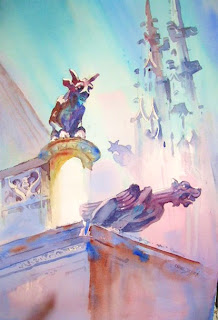
I've always loved painting sculpture, and this painting seemed perfect for Halloween.
I like the worm's eye view, too. Looking up at the gargoyles made them seem like they were going to launch themselves off the side of the building! Much more menacing.
Look for the "L", the warm color note among the cool colors, the diminishing repeats and the obliques. Happy Halloween!























